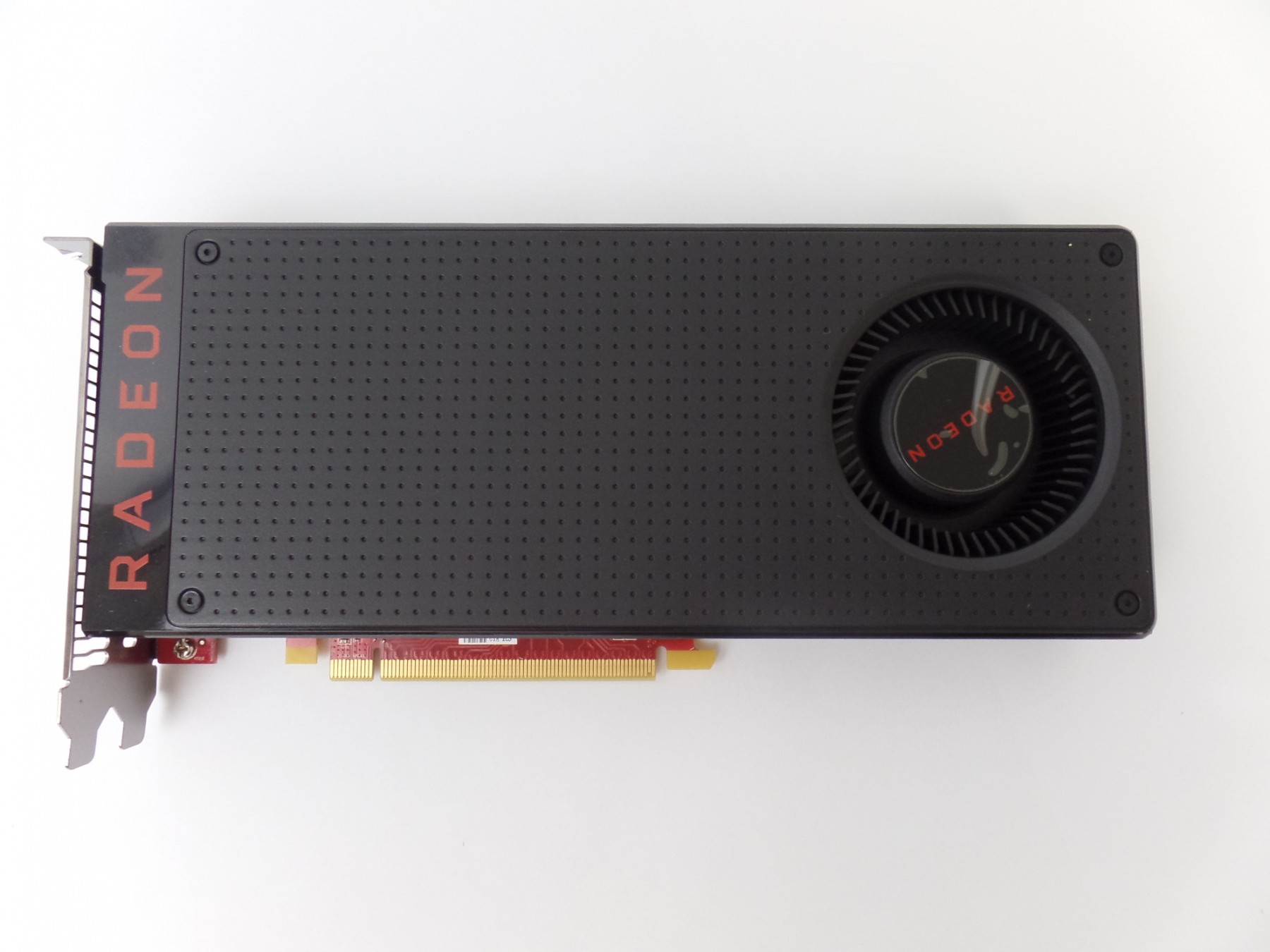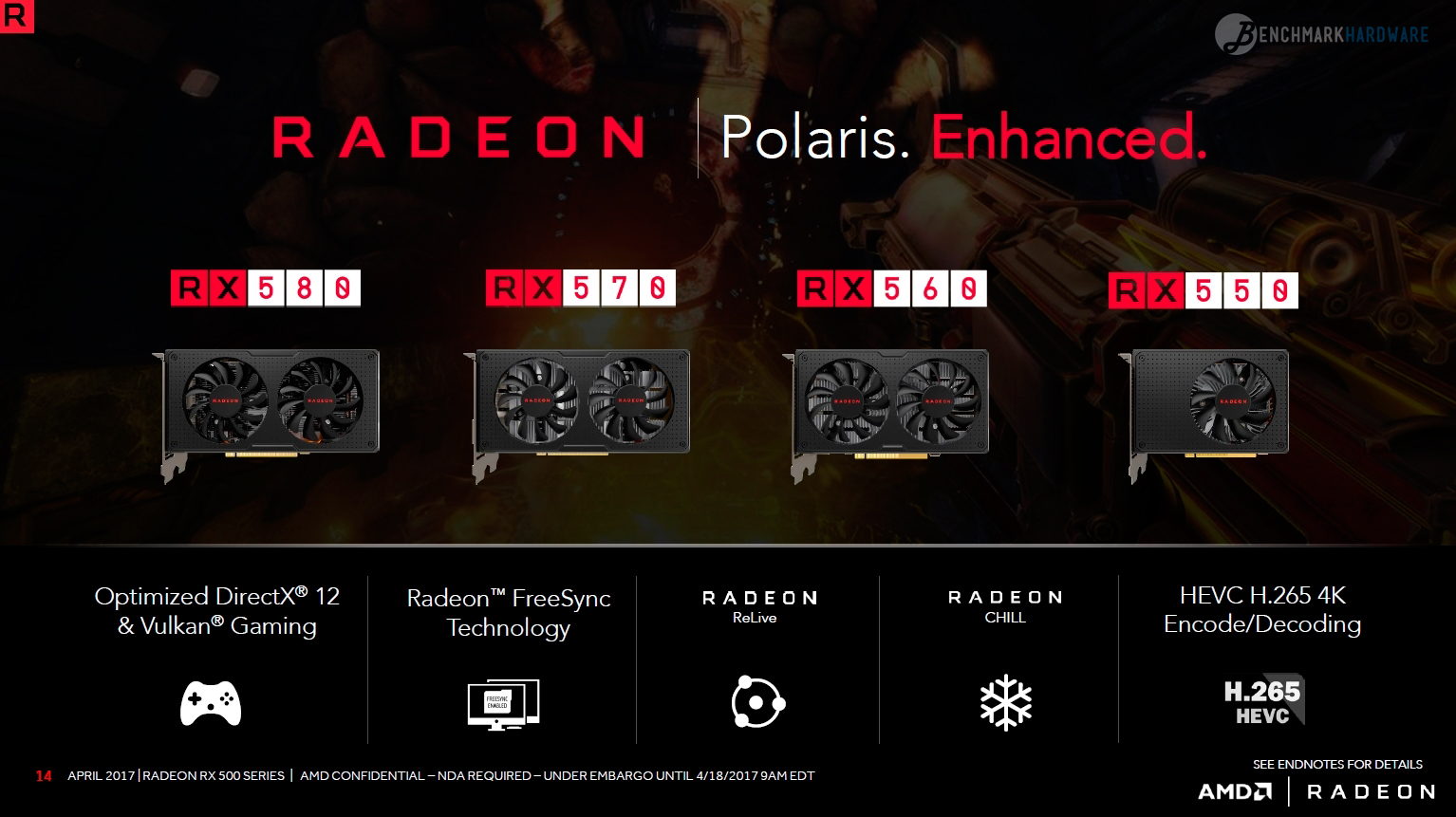
This is a 30-35W increase in TBPs over the RX 400 series, and given the expected prevalence of factory overclocked cards, the TBP of the average retail SKU is probably a bit higher still. RX 580 is a 185W card, while RX 570 starts at 150W. Otherwise the big change here is on power consumption. The standard memory configuration here will be for 4GB of VRAM, however AMD has mentioned that we should expect to see some 8GB cards as well, though none of these are on the launch list they’ve provided. Polaris 10 in general likes memory bandwidth, so as you can see in our companion RX 570 review, this works out well for the RX 570.
AMD RX 580 FULL
On RX 470 AMD set the SKU standard at the somewhat odd 6.6Gbps for RX 570, this is now a full 7Gbps, for a 6% increase in memory bandwidth. One thing RX 570 gets that RX 580 does not is a memory speed bump. RX 570 goes from 1206Mhz to 1244MHz on the boost clock, a 3% gain, while the base clock is increased from 926MHz to 1168MHz, a gain of 26%.

We’re looking at the same cut-down Polaris 10 GPU with 32 of 36 CUs enabled, but again clockspeeds are increased.
AMD RX 580 SERIES
Like its more powerful sibling, this is an enhanced version of its RX 400 series predecessor, the RX 470. Joining the RX 580 in today’s launch is the Radeon RX 570.

It should also be noted though that while the default configuration of the RX 580 is 8GB, like the RX 480, some 4GB cards are also expected to be produced. AMD is holding fast at 8Gbps GDDR5 on a 256-bit memory bus. Meanwhile the memory clock is not changing for the 8GB cards. As we’ll see further in this review, expect the performance gains to closely mirror the boost clock changes. Meanwhile the base clock – which has proven somewhat arbitrary on RX 480 since it rarely throttles anywhere near that much – is increasing by 12%, from 1120MHz to 1257MHz. Taking advantage of their manufacturing gains, AMD is bumping up the boost clock by 6%, from 1266MHz to 1340MHz. Like the RX 480 before it, this is a fully enabled Polaris 10 GPU. AMD Radeon RX Series Specification ComparisonĪt the high end is AMD’s new midrange contender, the Radeon RX 580. When the dust settled from the launch of AMD’s Polaris and NVIDIA’s Pascal architectures in 2016, NVIDIA generally prevailed, so this is AMD’s chance to rethink their gameplan and continue trying to grab market share from NVIDIA. NVIDIA has seemingly already made their move for 2017 in the midrange market with the optional 9Gbps factory overclocked GTX 1060 SKUs, so AMD would appear to be setting the stage for what should be much the rest of the year. The RX 500 series’ job isn’t to radically alter the competitive landscape – that’s Vega’s job – but rather it’s to push out a bit more performance and help close the gap in the midrange market with NVIDIA, while giving partners something new for 2017.

Otherwise for AMD, this is a chance to partially clean the slate for 2017.
AMD RX 580 UPGRADE
For those owners who did hold off, their reward is a slightly more powerful upgrade option in 2017 than they would have gotten in 2016. Instead they’re meant to tempt owners of cards like the R9 280 and R9 380 series who didn’t already upgrade to Polaris. AMD hasn’t done anything wild here – the configurations haven’t changed, and in fact TBPs have gone up – so relative to the RX 480 and RX 470, at the end of the day it’s a set of slightly more powerful cards for the same price as before.īecause these are just minor performance improvements over the existing RX 480 and RX 470 cards, these newer cards replace the RX 400 cards in AMD’s product stack, but they aren’t intended as upgrades for existing owners. These SKUs are pretty straightforward: take the new Polaris 10 GPU revision, plug it into more powerful boards, turn up the clockspeeds a bit, and you have a new SKU. The first Radeon RX 500 cards out of the gate are the Radeon RX 580 and the Radeon 570, which we’re reviewing today. AMD is using an updated revision of Polaris for all of these products, so there are some minor clockspeed improvements and a new memory state that have been baked into the RX 500 family that is not present in the RX 400 family, which makes the new RX 500 parts a bit more interesting.

Also joining the family is a newer, smaller GPU, Polaris 12, which will be the basis of the Radeon RX 550. As we’re covering in our companion launch article, the RX 500 series is a refresh of Polaris, bringing about newer, faster SKUs based on the existing Polaris 10 and 11 GPUs. Launching today is AMD’s new Radeon RX 500 series.


 0 kommentar(er)
0 kommentar(er)
